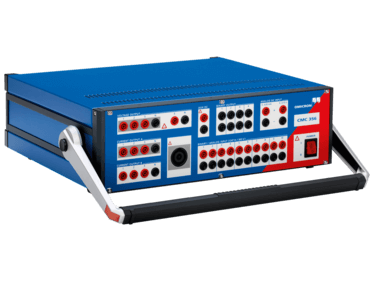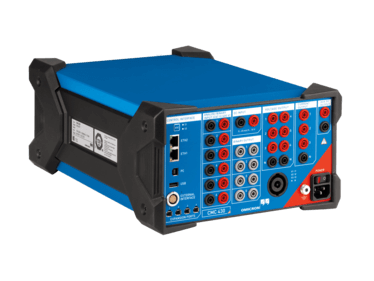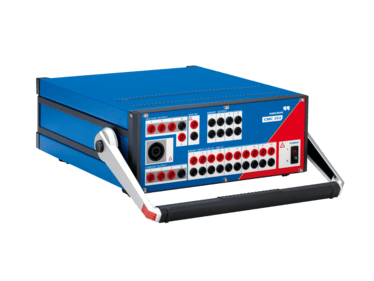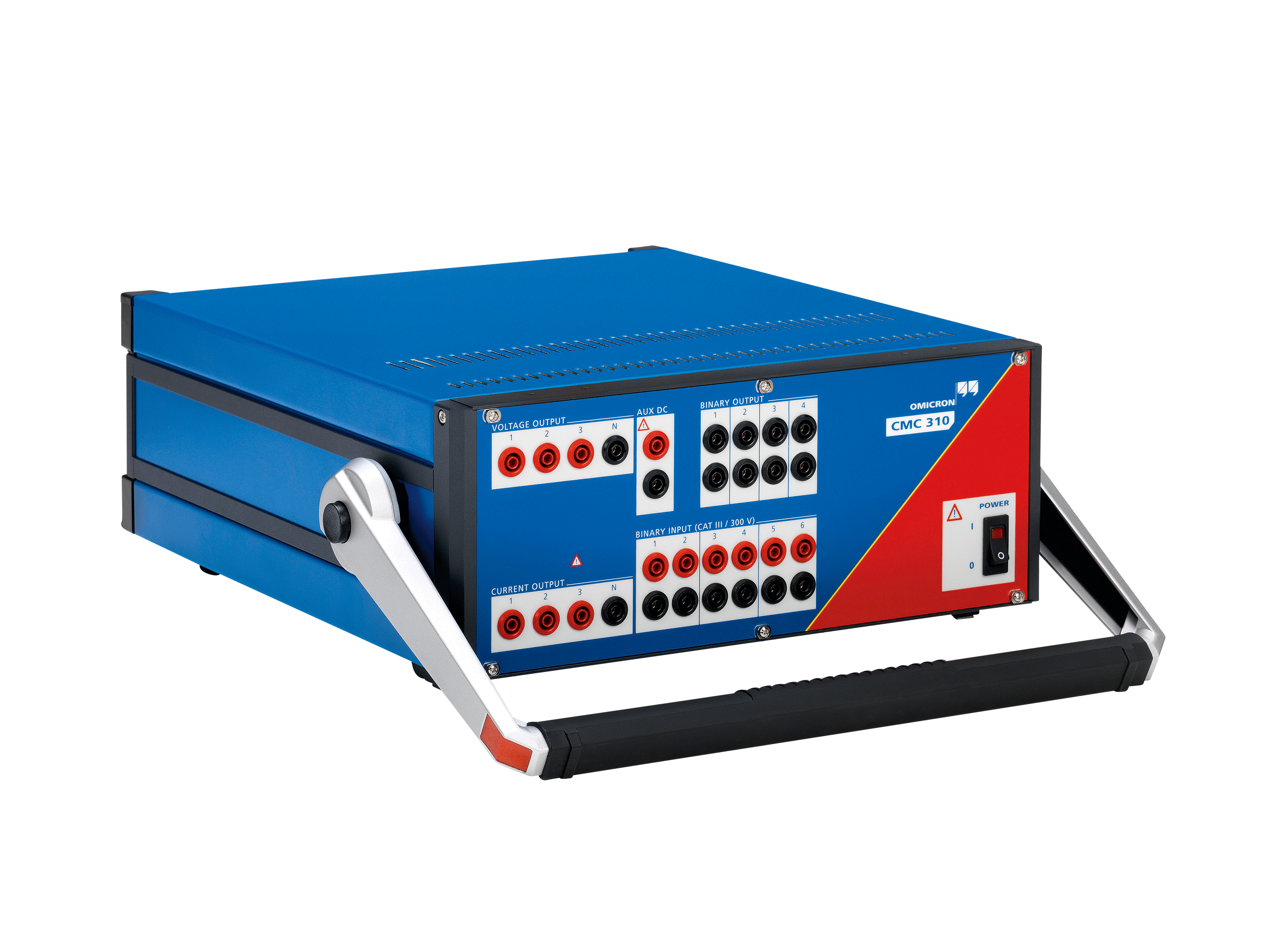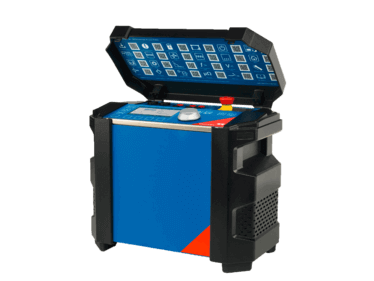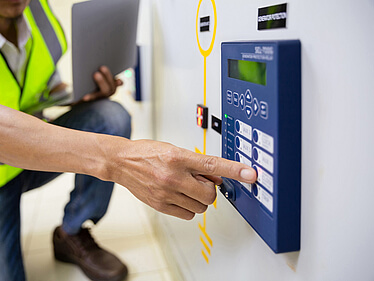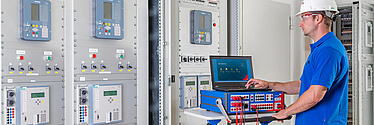
Protection Relay Testing
Protection relays play a key role in modern energy systems. Therefore, they must work reliably at all times. Only correctly operating protection relays protect your primary equipment from damage and contribute to a reliable power grid. This is why protection relays must undergo thorough tests throughout their entire lifecycle – from development and manufacturing to commissioning and regular maintenance during operation.
Challenges of protection relay testing
Three developments are currently causing a significant increase in the amount of assets requiring testing and this poses a serious challenge for many utilities:

Rapidly growing demand for energy
Current forecasts indicate that demand for electrical energy will continue to rise significantly in the coming decades. The main drivers are heat pumps, electromobility, and greater demand from industrial users. Existing power lines and substations can no longer keep up with this demand; the grid must be expanded. For utilities this means many new projects, major investments, and a heavy burden in general.

Increasing grid complexity
Integration of decentralized energy generation facilities increases the complexity of the grid and poses additional challenges for utilities. Substations must be modernized and technology such as IEC 61850 is increasingly being used to master this complexity and achieve the necessary flexibility.

Digital transformation
Protection engineers are confronted with new types and functions of protection devices, which are enabled through digital transformation. Now they must master not only testing in conventional substations, but also in IEC-61850 environments. Firmware updates are more frequent to ensure cybersecurity, which means that protection testing intervals may be shorter.
As a result of this additional demand, specialists are highly sought-after, both at utilities and service providers, and are currently difficult to come by. Efficient testing is therefore more important than ever. Our protection testing solutions help you to master the challenges involved in testing protection relays and other assets, as well as creating the associated test reports, in the best possible way.
Use our protection testing solutions to perform the following tests:
Current trends in protection testing
Questions about protection relay testing
Why do protection relays need to be tested?
The main function of a protection relay is to detect primary-sided faults or overloads as rapidly as possible and to selectively isolate the affected assets or parts of the grid from the rest of the grid or substation using circuit breakers. This protects affected or adjacent equipment and people, keeps outages to a minimum, and plays a key role in providing a highly reliable supply as well as ensuring high availability. It also allows for cost-effective operation, as loss of equipment and lengthy outages go hand in hand with enormous costs. To make sure that protection relays will work properly in the event of an emergency, they must be regularly tested to ensure they are working correctly.
The testing timings and intervals depend on country-specific regulations as well as individual strategies defined by the system operator.
When do protection relays need to be tested?
Generally speaking, there are four phases in the product life cycle of a protection relay, in which different types of tests are appropriate.
- Type tests and factory acceptance tests during the production and development phases at the protection relay manufacturer
- Laboratory tests when new substations are being planned
- Site acceptance tests and commissioning tests in the substation
- Recurring functional and maintenance tests on site during operation
The framework conditions for testing during commissioning and regular maintenance which utilities need to comply with are specified in country-specific guidelines, for example by the Forum Netztechnik/Netzbetrieb (FNN) in Germany, or the North American Electric Reliability Corporation (NERC) in the USA.
Manufacturers of protection relays in turn test them for conformity, for example, with the IEC 60255 standard, which defines rules and requirements for the behavior of measuring relays and protective equipment.
How often do protection relays need to be tested?
This is a question that can only be answered on a case-by-case basis by each system operator but is to some extent stipulated by country-specific guidelines or regulations. In principle, testing is advisable after the initial commissioning tests whenever there has been a change to the protection system, such as after a firmware update. However, protection relays are in operation for a long time and undetected changes may occur. In order to detect such changes, maintenance intervals and according test scopes are defined.
Numerous factors must be taken into account when defining testing intervals, such as:
- Criticality of the protected part of the grid for the overall security of supply
- The age and type of protection relay
- Country-specific laws, regulations, or guidelines
- The number of available protection engineers and their level of training
- Experience with certain device types
As these factors are variable, the testing intervals may also change dynamically. Therefore, a uniform testing strategy must be established with documentation that is integrated in a general quality management system.
What needs to be taken into account when testing protection relays?
When testing protection relays, the number one priority is your own safety. When preparing to test protection relays, all relevant safety and protection measures must be adhered to before testing commences.
Aspects of protection relay testing
1. Visual assessment of the relay's condition
2. Verifying the wiring after commissioning or rewiring
3. Testing and matching of the protection relay's parameters with the predefined requirements
4. Verifying the relay's functionality through testing of the individual protection functions
5. Checking whether the pick-up and trip time values are within the defined limits
6. Verification of the relay behavior from a system perspective
What are the advantages of IEC 61850?
To understand the advantages of IEC 61850, it helps to familiarize yourself with the two significant drawbacks of conventional substations compared to IEC 61850 substations. First of all, in a conventional substation, all equipment must be individually wired to other components using copper cables. Secondly, pieces of equipment from different manufacturers are not designed to communicate directly with one another.
With IEC 61850, on the other hand, communication between equipment takes place via a shared Ethernet network. The manufacturer-independent IEC 61850 standard forms the basis for digital communication in the substation network. Equipment and systems from different manufacturers are able to exchange data, commands, and measured values seamlessly using a set of standardized protocols. IEDs (Intelligent Electronic Devices) are used as protection, automation and control devices in IEC 61850 environments.
Sampled Values are used to transmit analog values of the energy system, for example from current and voltage transformers, via a digital network. Status information is exchanged between the devices via GOOSE messages, while signals are transmitted to the SCADA system using client/server communication (MMS).
Use of IEC 61850 for communication between assets in substations and to the control center reduces the amount of wiring work required. In addition, a flexible, manufacturer-independent and future-proof basis is provided that helps to increase the reliability, safety and efficiency of the power grid.
What is end-to-end protection testing?
With end-to-end testing, a section of a protected line or a protected area of an electrical installation is tested from all ends simultaneously. It is crucial that the test routines for all ends are time synchronized with each another. The focus of the test can be on verifying individual protective functions, as well as the correct behavior of the protection system as a whole when performing a system-based end-to-end test. Read on to find out how these two testing approaches differ.
End-to-end testing case study
What should a testing solution for end-to-end testing offer?
The biggest challenge in end-to-end testing is coordinating the tests. Protection testing solutions which facilitate the execution of the test and documentation of the results from just one side considerably reduce testing complexity and personnel costs. With system-based end-to-end testing using RelaySimTest, you can execute the test from just one end and make adjustments at any time, should this be necessary during the test.
How can I test a traveling wave protection relay?
In general, testing of traveling wave protection functions were not carried out when commissioning relays as this proved very difficult. OMICRON has therefore developed the TWX1 accessory, the world's first solution that makes testing of traveling wave protection functions possible in an uncomplicated manner even with conventional protection test sets.
The test setup matches to that of an end-to-end test with the addition of two TWX1. With RelaySimTest, the test can then be carried out from one side and results are documented fully automatically. For this purpose, the system and line data are entered in RelaySimTest. Desired test cases are defined by placing different fault types at desired positions in the power system model. The simulation then automatically calculates the transient signal and the traveling wave pulses. On execution, the CMC test set supplies the transient signal and the TWX1 accessory superimposes the three-phase voltage and current traveling wave pulses with nanosecond accuracy. The signal generated can be used to effectively test both the traveling wave protection as well as the location function of traveling wave protection relays.
Easy testing of traveling wave protection relays (PDF)
What are type tests in accordance with IEC 60255?
Extensive type tests are performed during the development and certification of protection relays. These demonstrate that the relay in question meets the specifications and standards and can be used in electrical installations. To simplify these tests, we offer special type testing packages for IEC 60255 which cover most aspects of relay behavior. You can also easily integrate our test system into your existing test environment via an open application programming interface.
Type test according to IEC 60255 (PDF)
What approaches to protection testing are there?
A distinction can be made between the parameter-based approach for protection relay testing (currently the dominant approach), and the innovative system-based approach. Furthermore, a differentiation can be made between manual and automated execution.
System-based protection testing can be used to verify, with minimum effort, whether the individual components in a protection system behave correctly as a group in the event of a fault. This approach makes it possible to detect hidden errors in the settings, logic and design of protection systems, regardless of the relay type or manufacturer. RelaySimTest provides you with the tools needed to optimally prepare and carry out system tests.
Settings-based protection testing focuses on the protection functions and the associated set values of the individual protection relay. Modern protection relays offer thousands of settings which is why automated testing is far superior to a manual approach. Test Universe provides you with an extensive range of options in terms of standardization and automation, including fully automatic creation of test reports. With the aid of test plans, you can carry out testing with maximum efficiency. Combined with the immense functional range, our testing software also gives you the necessary flexibility to test protection relays and other secondary assets in detail.
Testing approaches
- System-based protection testing: RelaySimTest
- Parameter-based protection testing: Test Universe
How can I automate protection testing?
Automation is a term that is often used a little prematurely, especially when it comes to protection testing. In reality, protection engineers are confronted with assets from many different manufacturers, making it much more difficult to fully automate test procedures. In some cases, suppliers talk about automation when their solution only automates individual parts of the protection testing. Hence caution is advised.
To achieve a high degree of automation in protection testing, you need both adaptable test templates for protection relays from different manufacturers and the possibility to flexibly combine individual test modules in test plans. Efficiency can be raised further by defining uniform standards for testing protection relays. Fully automated documentation of the test results is also a basic requirement as this involves considerable effort when performed manually. Our Protection Testing Library (PTL) and the OMICRON Control Center (OCC) allow you to use test procedures that are individually customized to suit your needs, which can be carried out almost fully automatically. Compared to manual protection testing, the testing effort can be reduced by up to 80 percent.
Available test templates
Contact us
What issues are you facing? If you have any specific questions about your challenges,
we are happy to give you personal advice.
